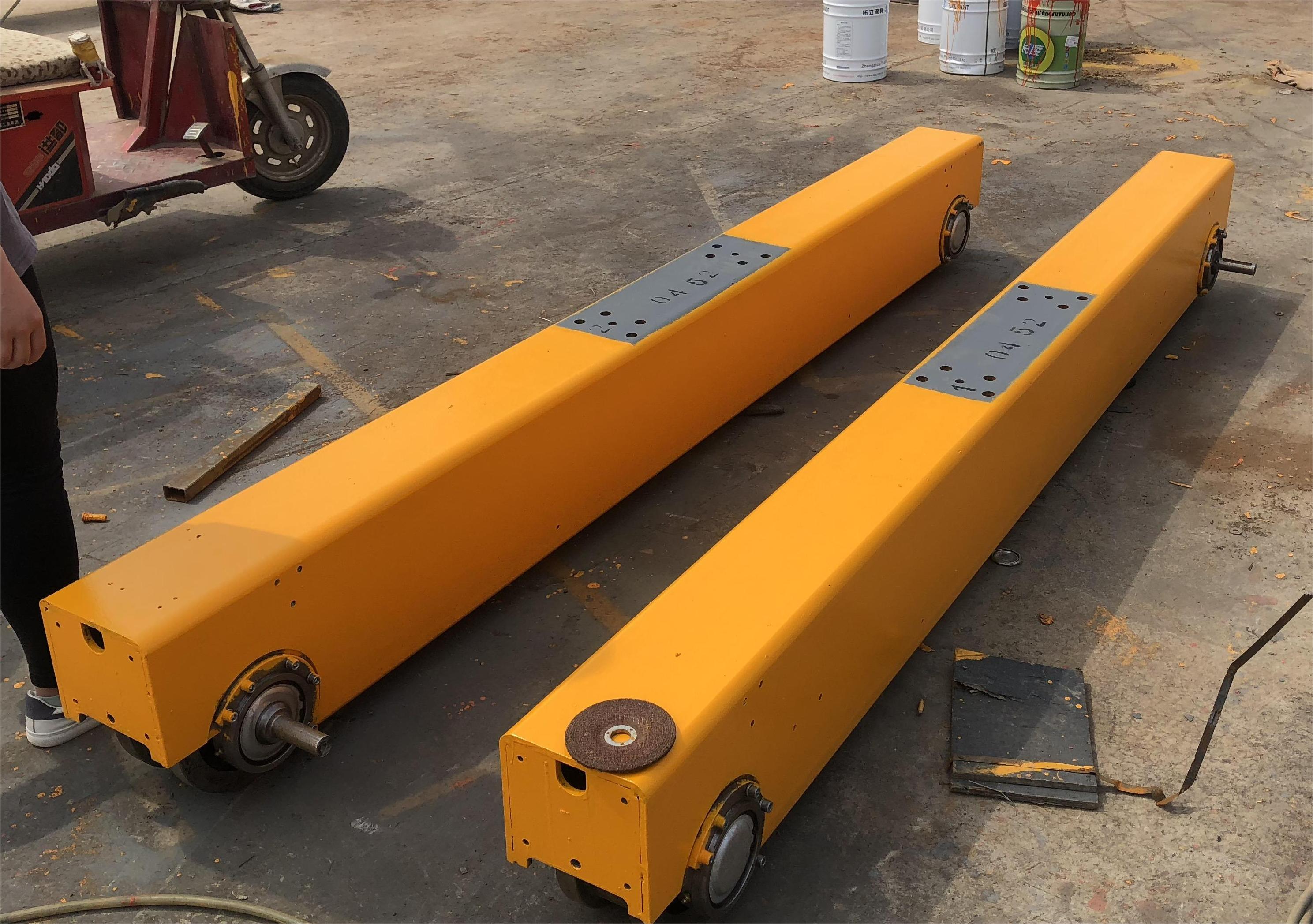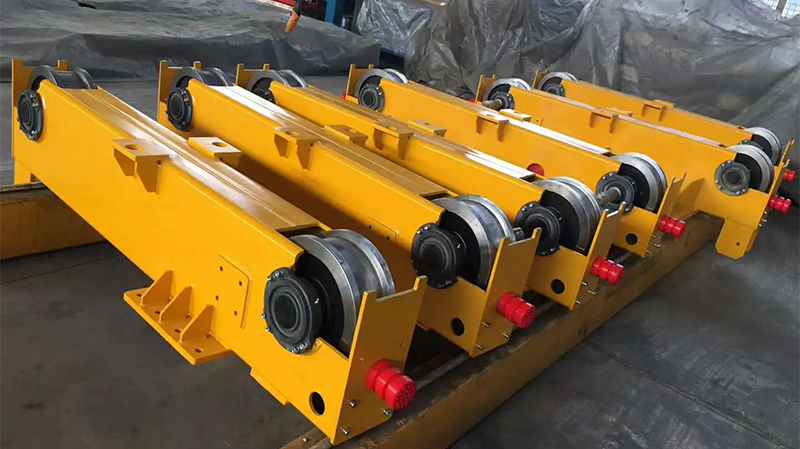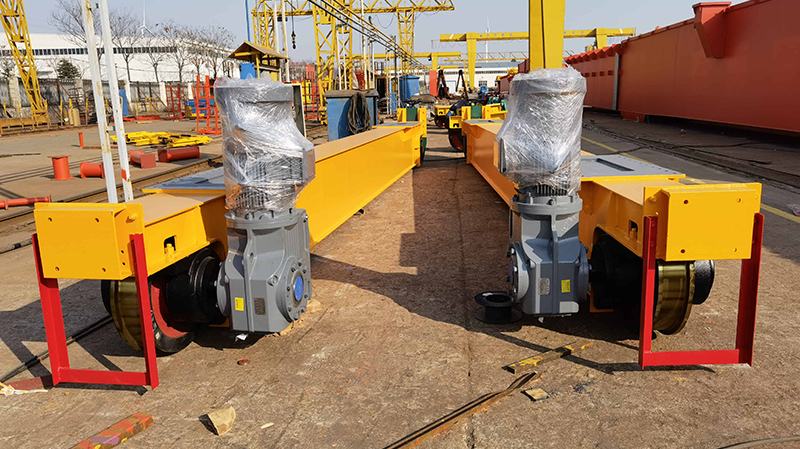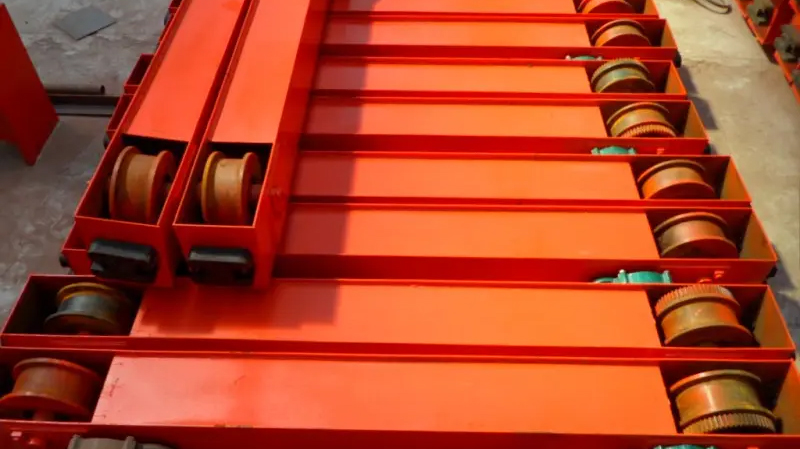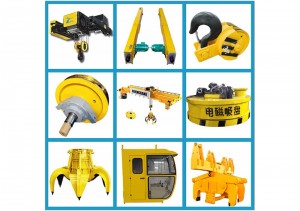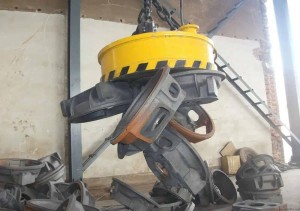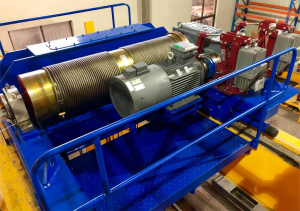
10 Ton Overhead Crane End Beam End Carriage Of Eot Crane
Product Details and Features
The crane end beam is an important part of the crane operation. It is installed at both ends of the main beam and supports the crane to reciprocate on the track. The end beam is an important part supporting the whole crane, so its strength after processing must meet the requirements of use.
The end beams are equipped with wheels, motors, buffers and other components. After the running motor on the end beam is energized, the power is transmitted to the wheels through the reducer, thereby driving the overall movement of the crane.
Application
Compared with the end beam running on the steel track, the running speed of the end beam is smaller, the speed is faster, the operation is stable, the lifting weight is large, and the disadvantage is that it can only move within a specific range. Therefore, it is more used in workshops or loading and unloading plants.
The end beam steel structure of our company can be processed in different ways according to the tonnage of the crane. The end beam of the small tonnage crane is formed by integral processing of rectangular tubes, which has high processing efficiency and beautiful appearance of the product, and the overall strength of the end beam is high.
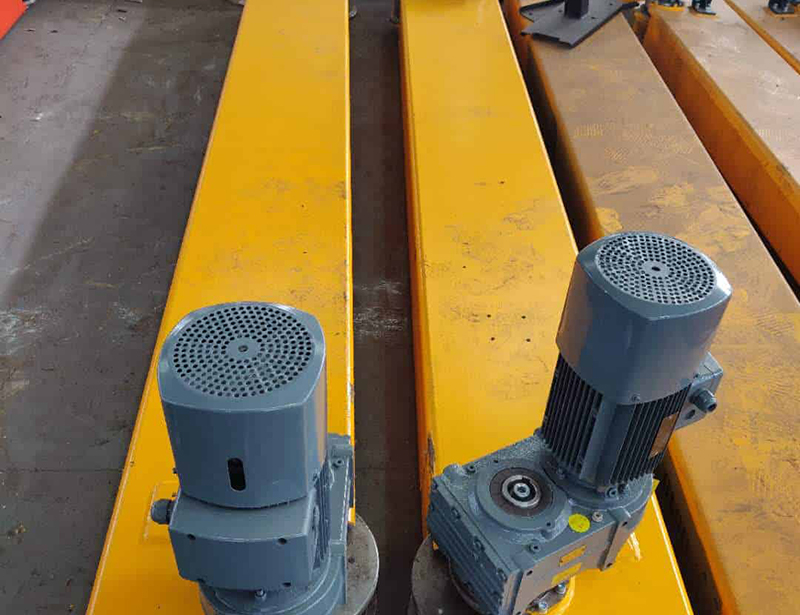
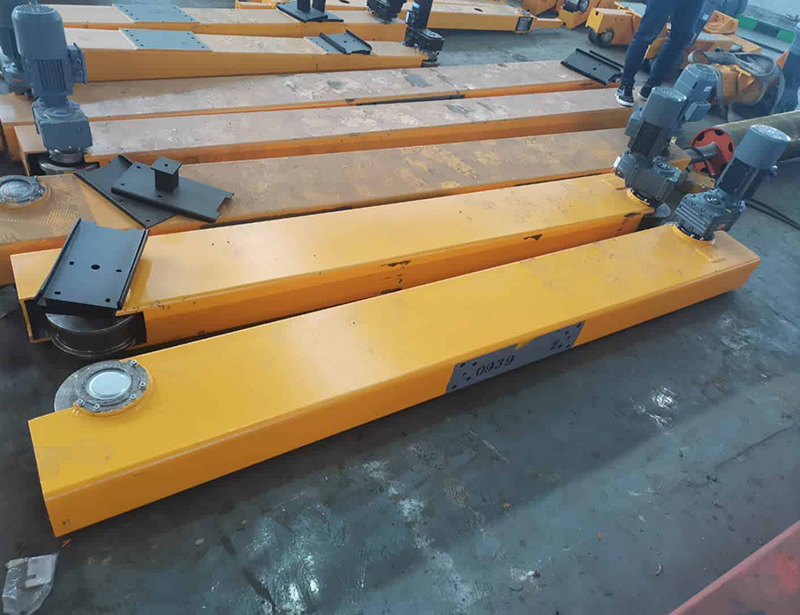
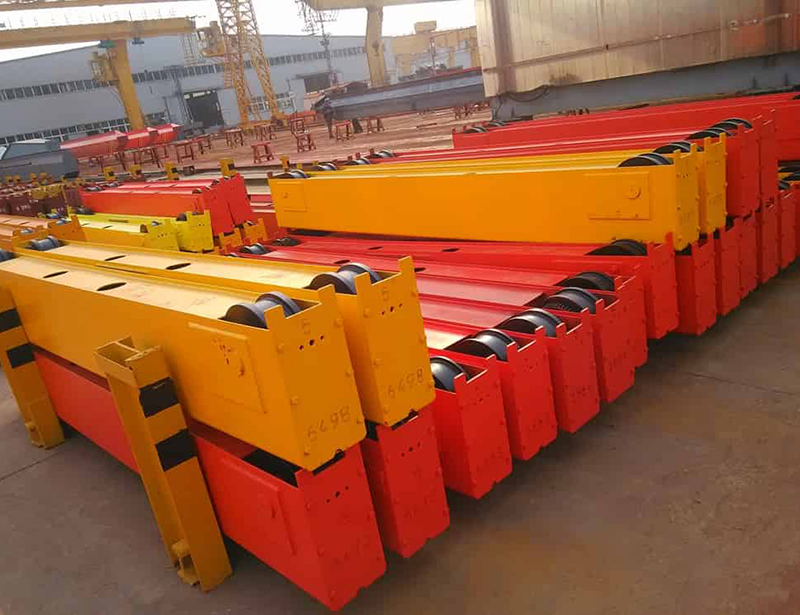
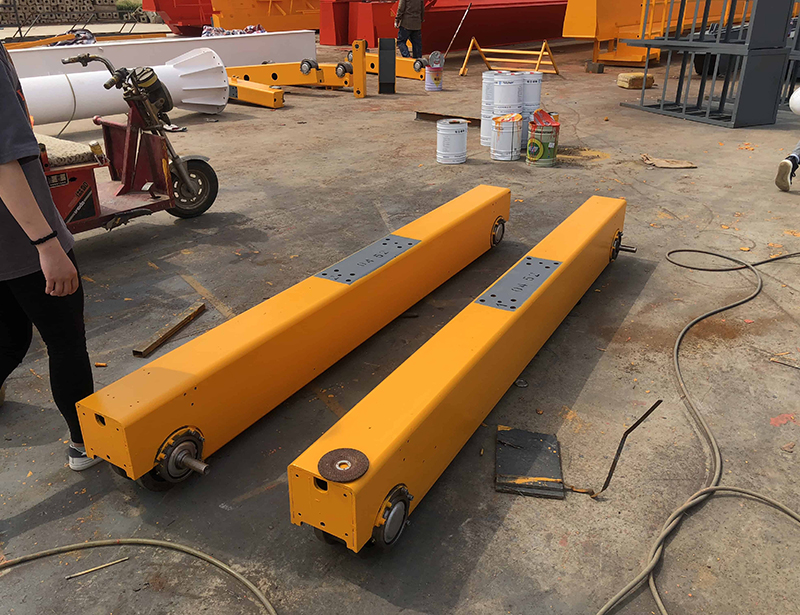
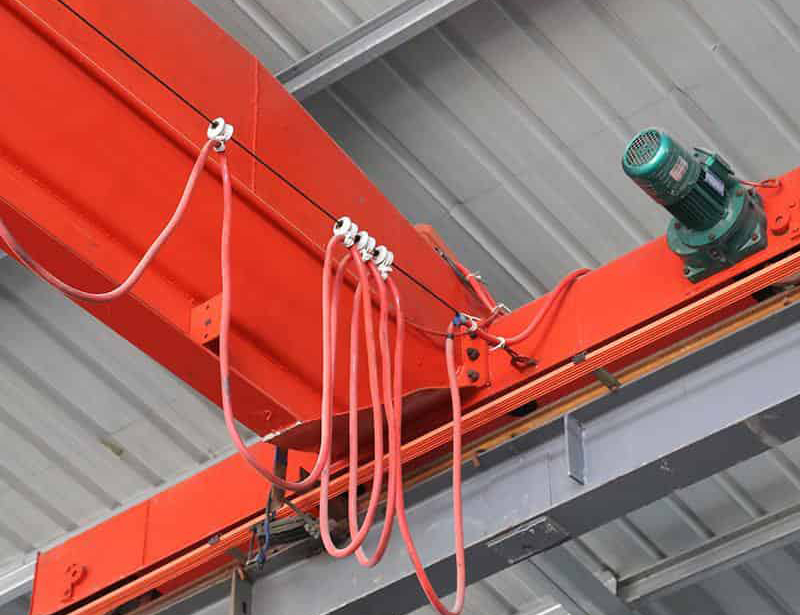
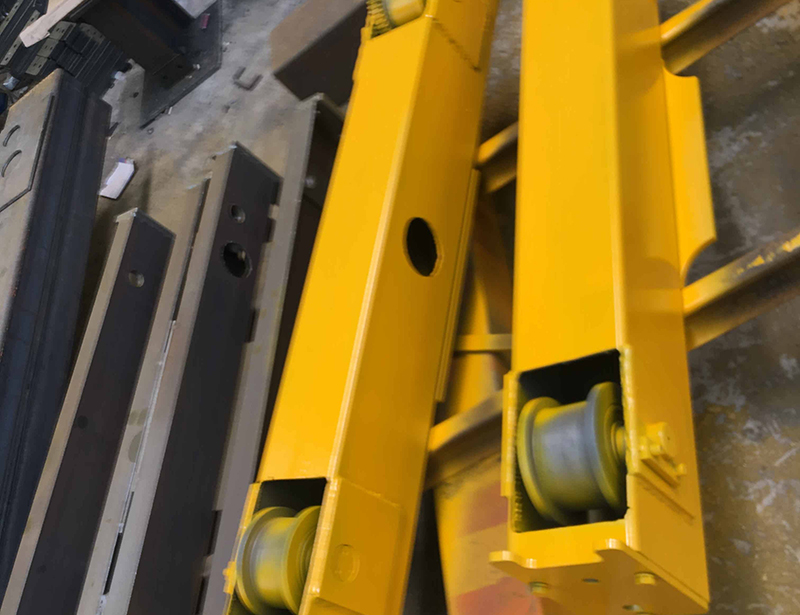
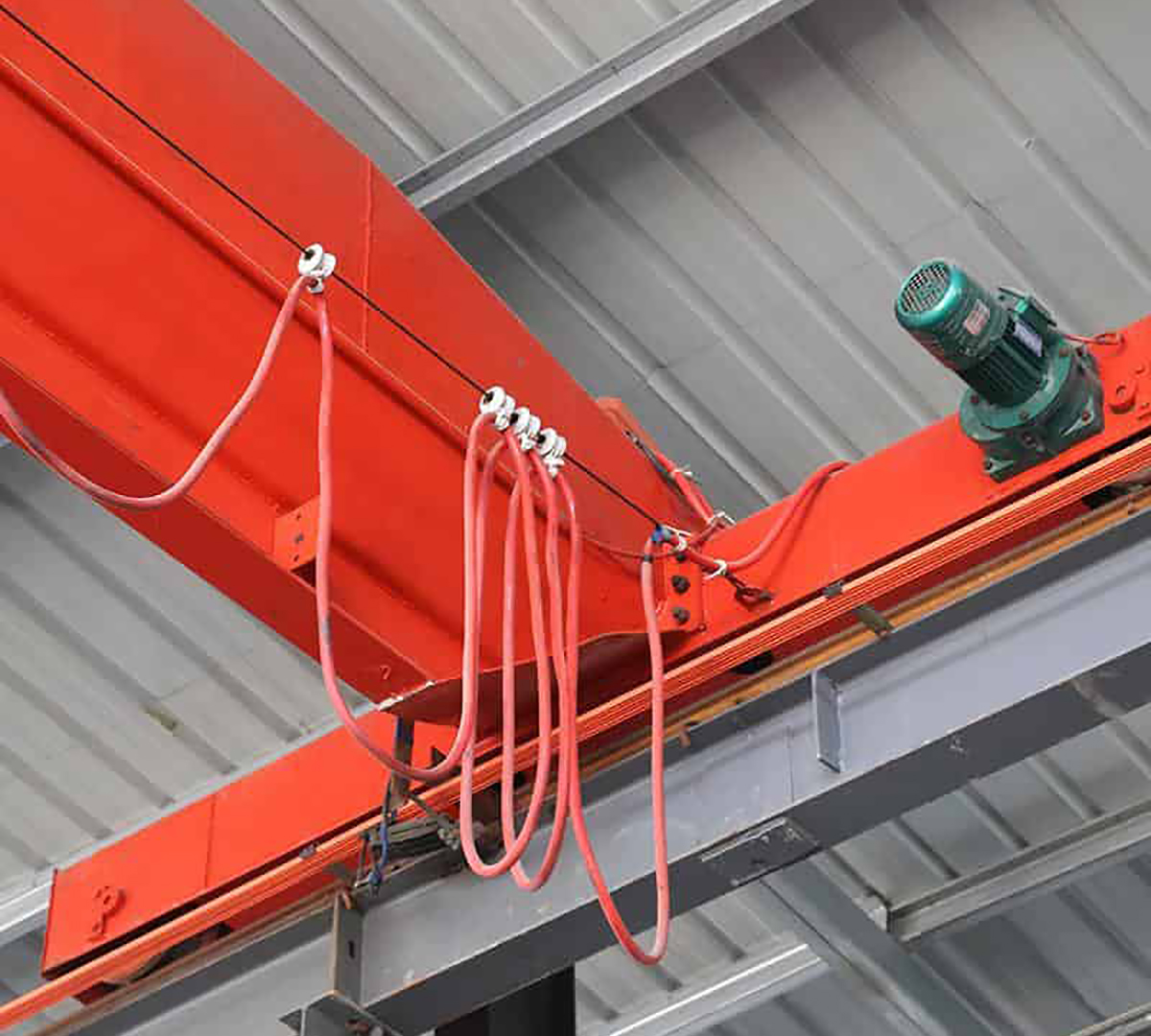
Product Process
The wheel size used in conjunction with the end beam of the large-tonnage crane is larger, so the form of steel plate splicing is used. The material of the spliced end beam is Q235B, and higher-strength carbon structural steel can also be used depending on the application. The processing of large end beams is spliced by welding. Most of the welding work is automatically processed by welding robots.
Finally, the irregular welds are processed by experienced workers. Before processing, all robots must be debugged and inspected to ensure good performance. All welding workers in our company have welding-related occupational grade certificates to ensure that the processed welds are free of internal and external defects.
The end beam after the welding process is completed must be tested to ensure that the mechanical properties of the welded part meet the relevant requirements, and its strength is equal to or even higher than the performance of the material itself.

